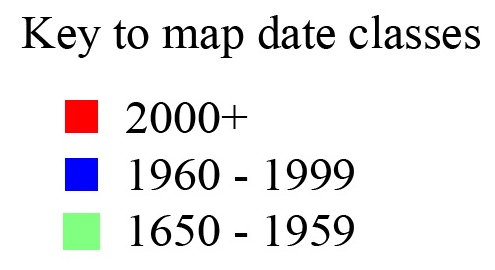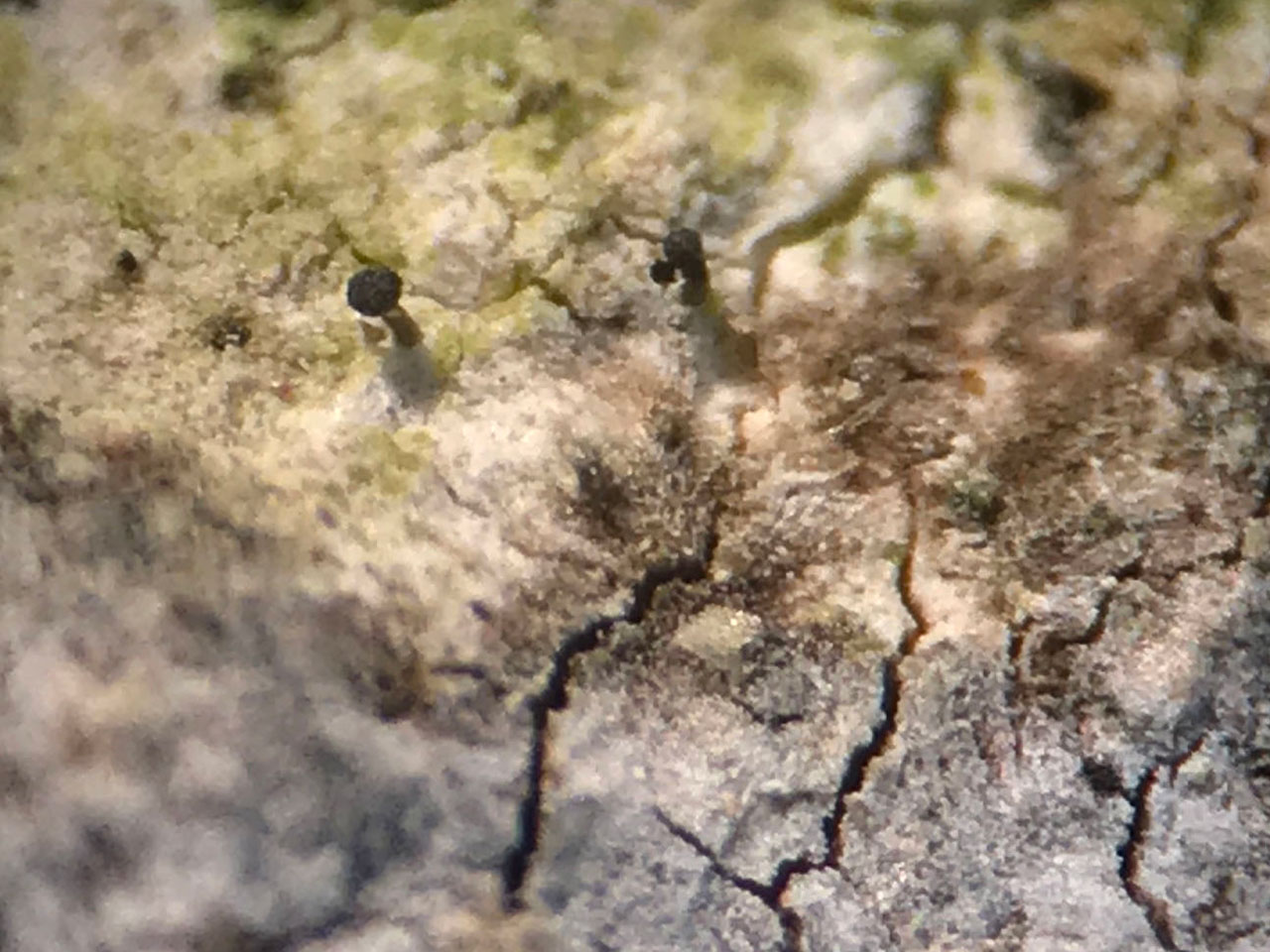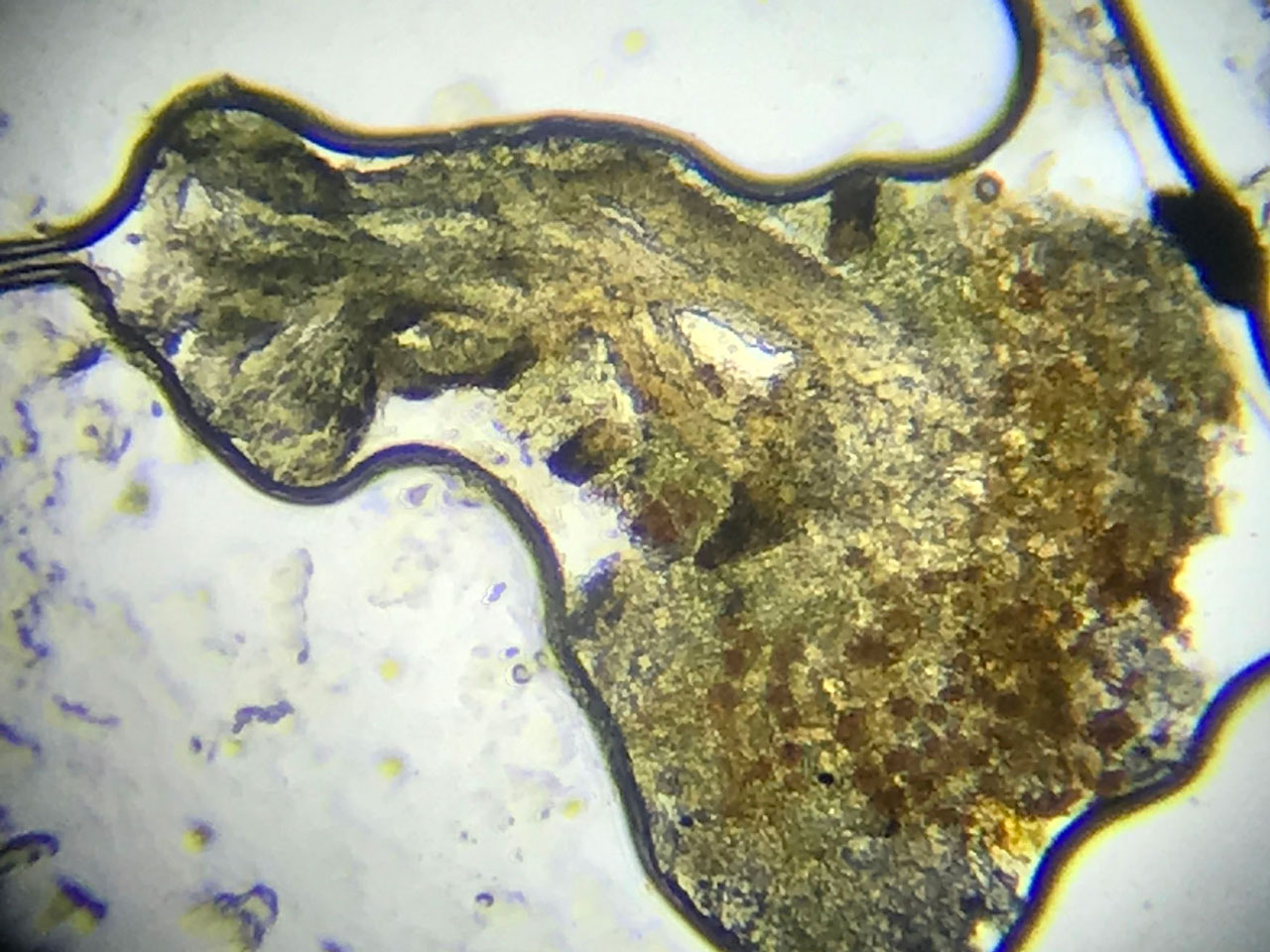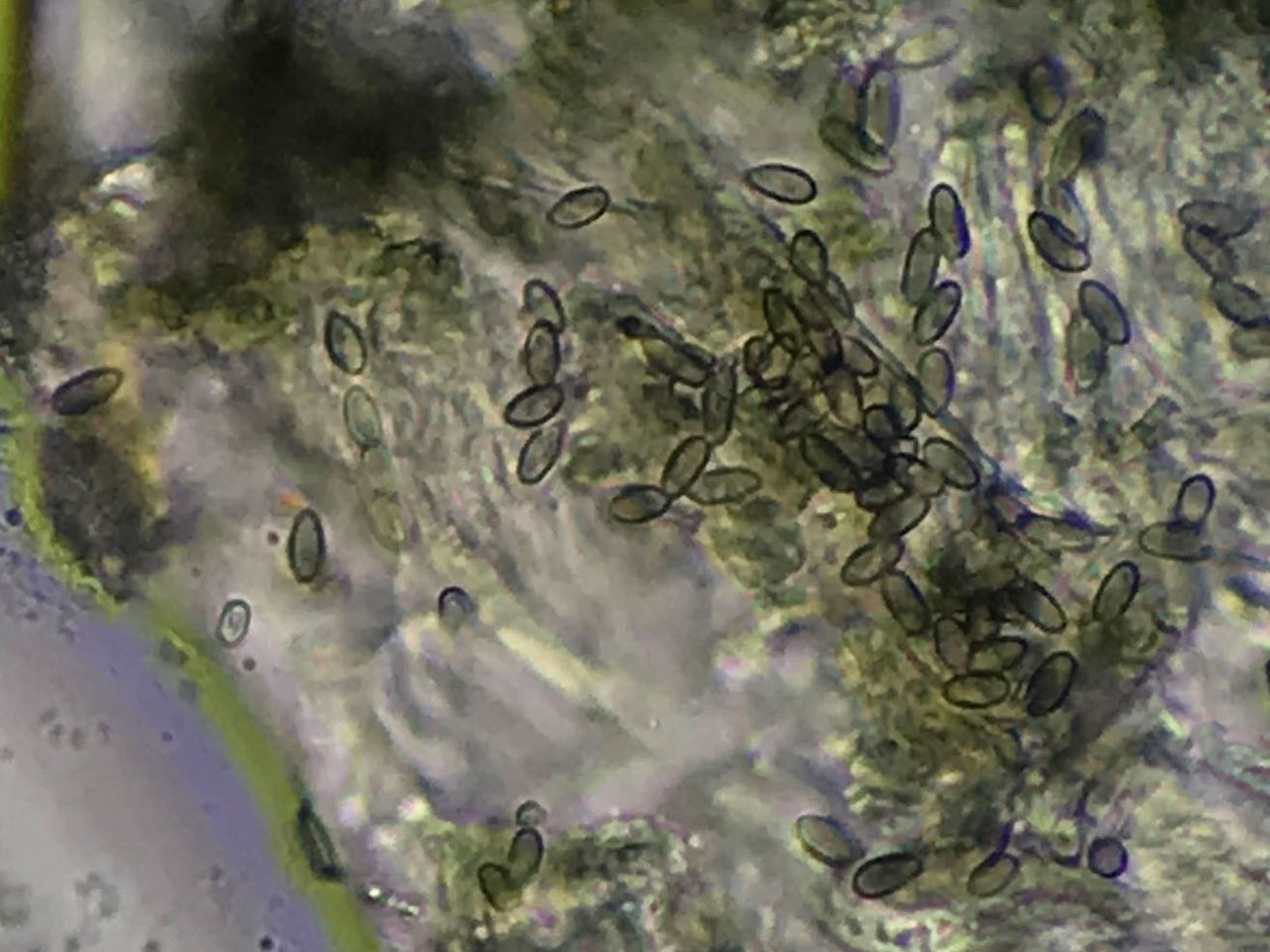A rare short stalked Chaenothecopsis with simple spores, which is parasitic of Dendrographa species and Lecanactis abietina growing on the dry bark of old Oaks in old growth oceanic woodlands in the south and south west. Similar to Chaenothecopsis savonica, but shorter stalked and parasitic on Trentepohlia-containing lichens, with darker spores and longer asci.
Apothecia (0.15–) 0.2–0.5 mm high, not pruinose. Head lenticular, 0.1–0.3 mm diam., shining black. Stalk 0.04–0.06 mm diam., shining black but typically paler at the base in GBI material, in the central part consisting of pale greenish, irregularly to largely periclinally arranged hyphae, the outermost part forming a dark brownish cover of sclerotized hyphae; epithecium thin, aeruginose in section; hypothecium green, K+ slightly yellow in places; exciple of periclinally arranged, brownish-aeruginose, short cylindrical cells. Asci 34–40 × 3.3–3.7 µm, cylindrical, with the apex strongly thickened and penetrated by a broad canal. Ascospores (5.5–) 6–7 × 2.5–3.5 µm, aseptate, dark green-brown, smooth-walled, with rounded ends. All parts of the apothecia K– and N–.
Similar to Chaenothecopsis savonica, but shorter stalked and parasitic on Trentepohlia-containing lichens, with darker spores and longer asci.
Parasitic on Dendrographa decolorans, Dendrographa latebrarum, and Lecanactis abietina, on dry bark of old Oaks in oceanic woods. The host can be quite damaged and some collections have been taken to be lichenised as the host was no longer identifiable, but in most observations the fungus has clearly been parasitic. Mainly on Dendrographa decolorans in the south but on Lecanactis abietina further north.

Rare. S.W. England from Hampshire (New Forest) to Cornwall, also in Wales and N. Ireland.
Not assessed, but appears to be rare and with very low population densities and potentially threatened by increasing shade in southern woods.
Sanderson, A., Cannon, P., Coppins, B., & Simkin, J. (2025). Mycocaliciales: Sphinctrinaceae, including Chaenothecopsis, Mycocalicium, Phaeocalicium, Sphinctrina and Stenocybe. Revisions of British and Irish Lichens 52: 1–15.
Text by Neil A Sanderson based on Sanderson et al (2025)


